Vibhatha Abeykoon
In-depth Analysis On Parallel Processing Patterns for High-Performance Dataframes
Jul 03, 2023

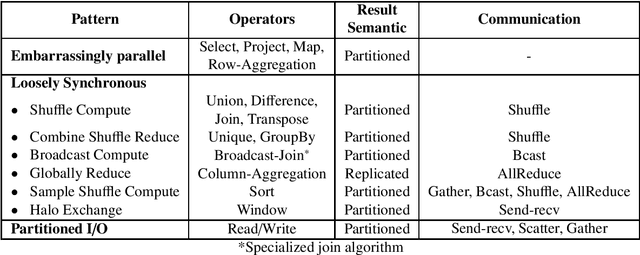

Abstract:The Data Science domain has expanded monumentally in both research and industry communities during the past decade, predominantly owing to the Big Data revolution. Artificial Intelligence (AI) and Machine Learning (ML) are bringing more complexities to data engineering applications, which are now integrated into data processing pipelines to process terabytes of data. Typically, a significant amount of time is spent on data preprocessing in these pipelines, and hence improving its e fficiency directly impacts the overall pipeline performance. The community has recently embraced the concept of Dataframes as the de-facto data structure for data representation and manipulation. However, the most widely used serial Dataframes today (R, pandas) experience performance limitations while working on even moderately large data sets. We believe that there is plenty of room for improvement by taking a look at this problem from a high-performance computing point of view. In a prior publication, we presented a set of parallel processing patterns for distributed dataframe operators and the reference runtime implementation, Cylon [1]. In this paper, we are expanding on the initial concept by introducing a cost model for evaluating the said patterns. Furthermore, we evaluate the performance of Cylon on the ORNL Summit supercomputer.
HPTMT Parallel Operators for High Performance Data Science & Data Engineering
Aug 13, 2021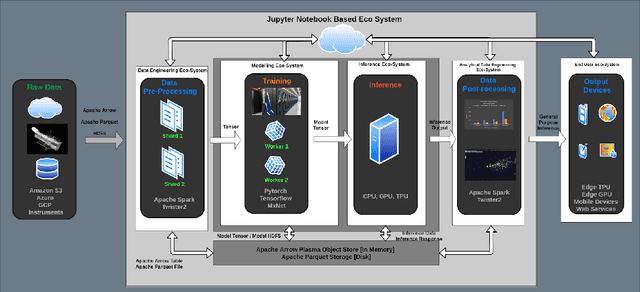


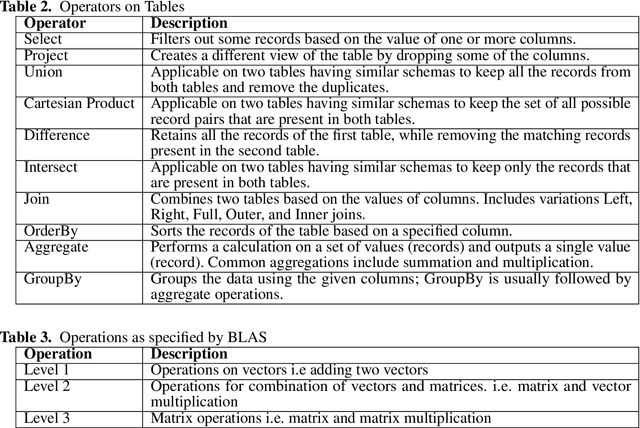
Abstract:Data-intensive applications are becoming commonplace in all science disciplines. They are comprised of a rich set of sub-domains such as data engineering, deep learning, and machine learning. These applications are built around efficient data abstractions and operators that suit the applications of different domains. Often lack of a clear definition of data structures and operators in the field has led to other implementations that do not work well together. The HPTMT architecture that we proposed recently, identifies a set of data structures, operators, and an execution model for creating rich data applications that links all aspects of data engineering and data science together efficiently. This paper elaborates and illustrates this architecture using an end-to-end application with deep learning and data engineering parts working together.
HPTMT: Operator-Based Architecture for Scalable High-Performance Data-Intensive Frameworks
Jul 30, 2021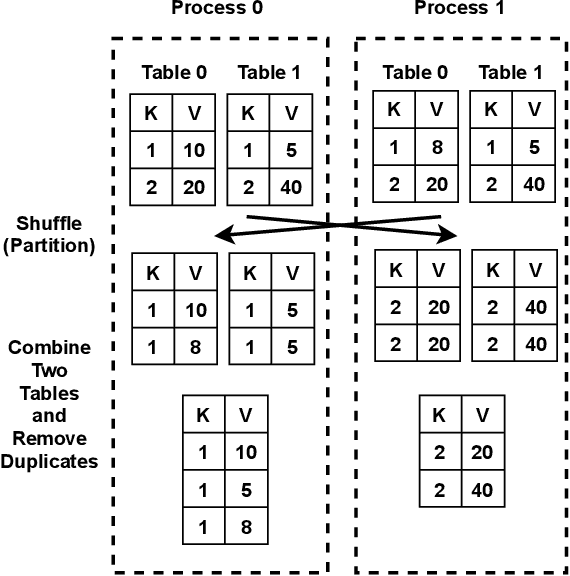
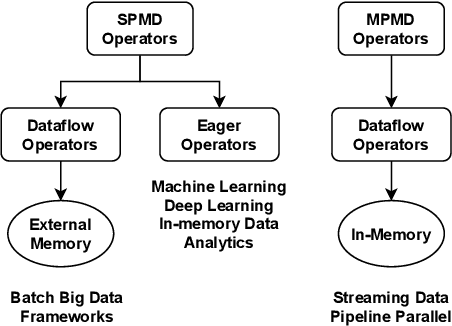
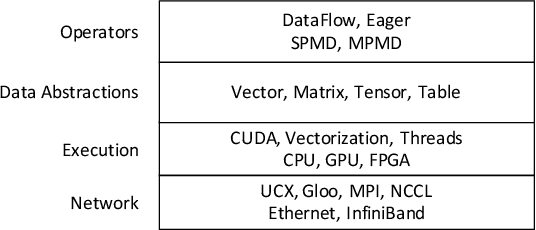
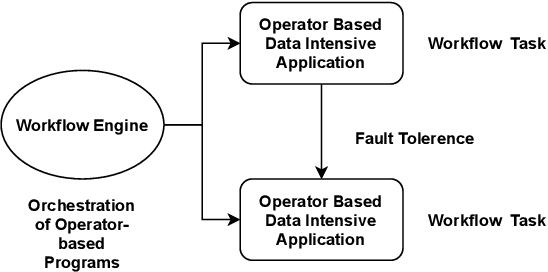
Abstract:Data-intensive applications impact many domains, and their steadily increasing size and complexity demands high-performance, highly usable environments. We integrate a set of ideas developed in various data science and data engineering frameworks. They employ a set of operators on specific data abstractions that include vectors, matrices, tensors, graphs, and tables. Our key concepts are inspired from systems like MPI, HPF (High-Performance Fortran), NumPy, Pandas, Spark, Modin, PyTorch, TensorFlow, RAPIDS(NVIDIA), and OneAPI (Intel). Further, it is crucial to support different languages in everyday use in the Big Data arena, including Python, R, C++, and Java. We note the importance of Apache Arrow and Parquet for enabling language agnostic high performance and interoperability. In this paper, we propose High-Performance Tensors, Matrices and Tables (HPTMT), an operator-based architecture for data-intensive applications, and identify the fundamental principles needed for performance and usability success. We illustrate these principles by a discussion of examples using our software environments, Cylon and Twister2 that embody HPTMT.
High Performance Data Engineering Everywhere
Jul 19, 2020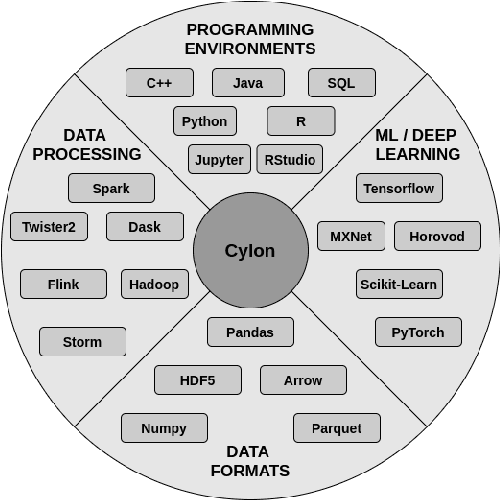
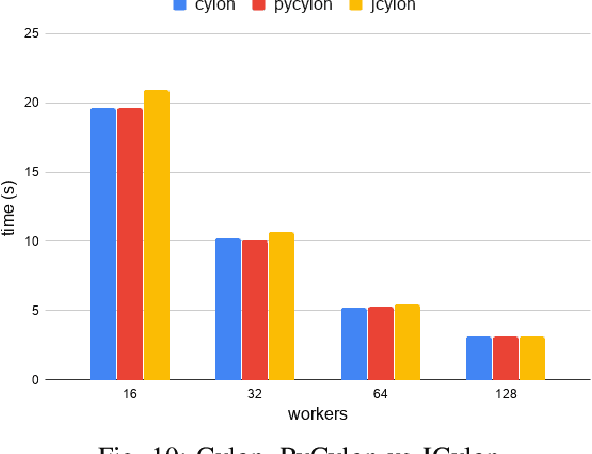
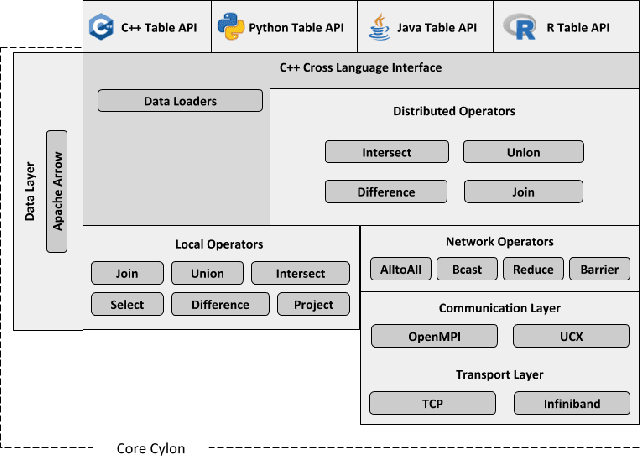
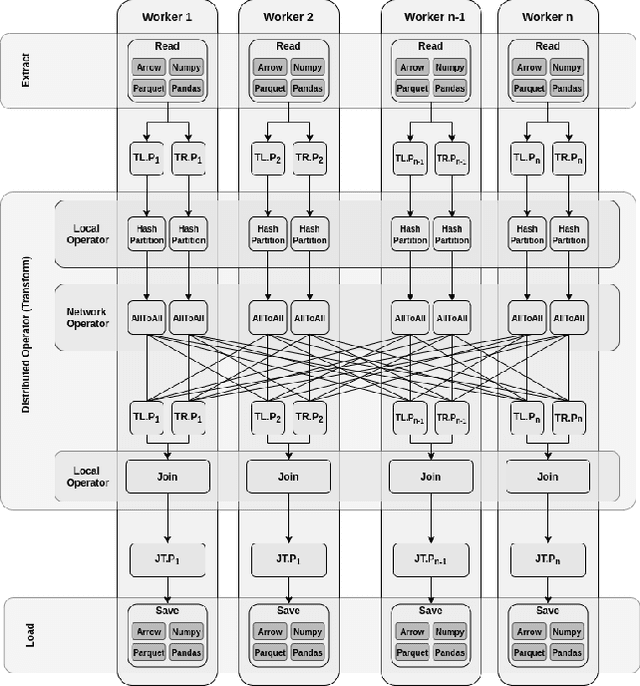
Abstract:The amazing advances being made in the fields of machine and deep learning are a highlight of the Big Data era for both enterprise and research communities. Modern applications require resources beyond a single node's ability to provide. However this is just a small part of the issues facing the overall data processing environment, which must also support a raft of data engineering for pre- and post-data processing, communication, and system integration. An important requirement of data analytics tools is to be able to easily integrate with existing frameworks in a multitude of languages, thereby increasing user productivity and efficiency. All this demands an efficient and highly distributed integrated approach for data processing, yet many of today's popular data analytics tools are unable to satisfy all these requirements at the same time. In this paper we present Cylon, an open-source high performance distributed data processing library that can be seamlessly integrated with existing Big Data and AI/ML frameworks. It is developed with a flexible C++ core on top of a compact data structure and exposes language bindings to C++, Java, and Python. We discuss Cylon's architecture in detail, and reveal how it can be imported as a library to existing applications or operate as a standalone framework. Initial experiments show that Cylon enhances popular tools such as Apache Spark and Dask with major performance improvements for key operations and better component linkages. Finally, we show how its design enables Cylon to be used cross-platform with minimum overhead, which includes popular AI tools such as PyTorch, Tensorflow, and Jupyter notebooks.
Scientific Image Restoration Anywhere
Nov 12, 2019

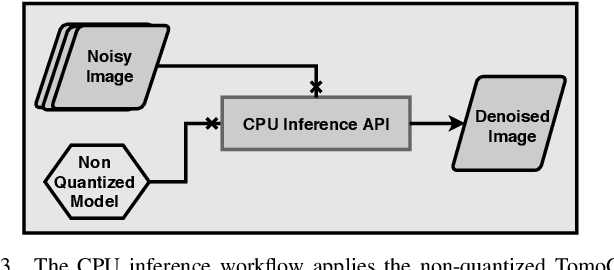

Abstract:The use of deep learning models within scientific experimental facilities frequently requires low-latency inference, so that, for example, quality control operations can be performed while data are being collected. Edge computing devices can be useful in this context, as their low cost and compact form factor permit them to be co-located with the experimental apparatus. Can such devices, with their limited resources, can perform neural network feed-forward computations efficiently and effectively? We explore this question by evaluating the performance and accuracy of a scientific image restoration model, for which both model input and output are images, on edge computing devices. Specifically, we evaluate deployments of TomoGAN, an image-denoising model based on generative adversarial networks developed for low-dose x-ray imaging, on the Google Edge TPU and NVIDIA Jetson. We adapt TomoGAN for edge execution, evaluate model inference performance, and propose methods to address the accuracy drop caused by model quantization. We show that these edge computing devices can deliver accuracy comparable to that of a full-fledged CPU or GPU model, at speeds that are more than adequate for use in the intended deployments, denoising a 1024 x 1024 image in less than a second. Our experiments also show that the Edge TPU models can provide 3x faster inference response than a CPU-based model and 1.5x faster than an edge GPU-based model. This combination of high speed and low cost permits image restoration anywhere.
Performance Optimization on Model Synchronization in Parallel Stochastic Gradient Descent Based SVM
May 03, 2019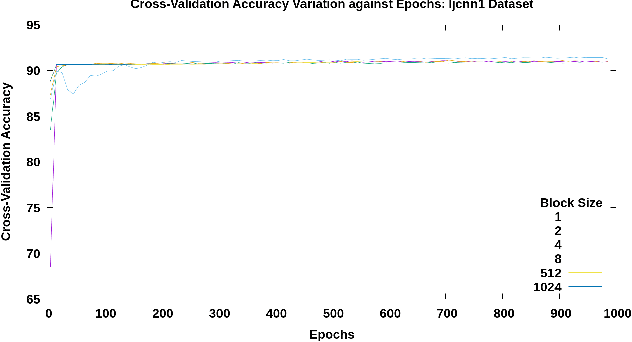

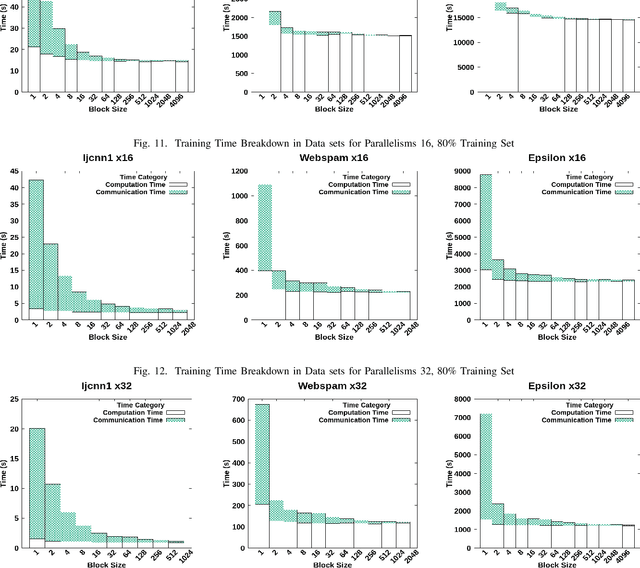
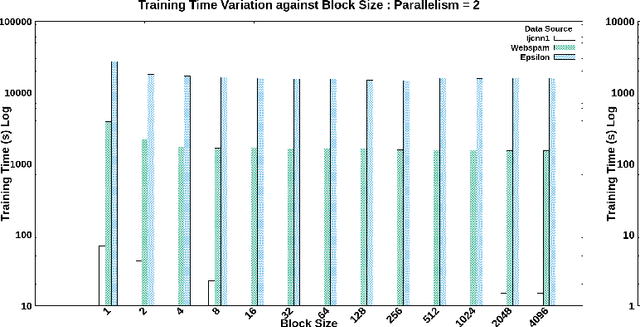
Abstract:Understanding the bottlenecks in implementing stochastic gradient descent (SGD)-based distributed support vector machines (SVM) algorithm is important in training larger data sets. The communication time to do the model synchronization across the parallel processes is the main bottleneck that causes inefficiency in the training process. The model synchronization is directly affected by the mini-batch size of data processed before the global synchronization. In producing an efficient distributed model, the communication time in training model synchronization has to be as minimum as possible while retaining a high testing accuracy. The effect from model synchronization frequency over the convergence of the algorithm and accuracy of the generated model must be well understood to design an efficient distributed model. In this research, we identify the bottlenecks in model synchronization in parallel stochastic gradient descent (PSGD)-based SVM algorithm with respect to the training model synchronization frequency (MSF). Our research shows that by optimizing the MSF in the data sets that we used, a reduction of 98\% in communication time can be gained (16x - 24x speed up) with respect to high-frequency model synchronization. The training model optimization discussed in this paper guarantees a higher accuracy than the sequential algorithm along with faster convergence.
 Add to Chrome
Add to Chrome Add to Firefox
Add to Firefox Add to Edge
Add to Edge